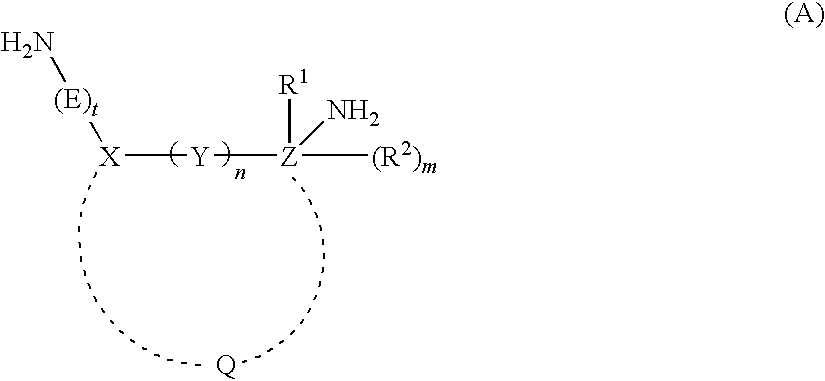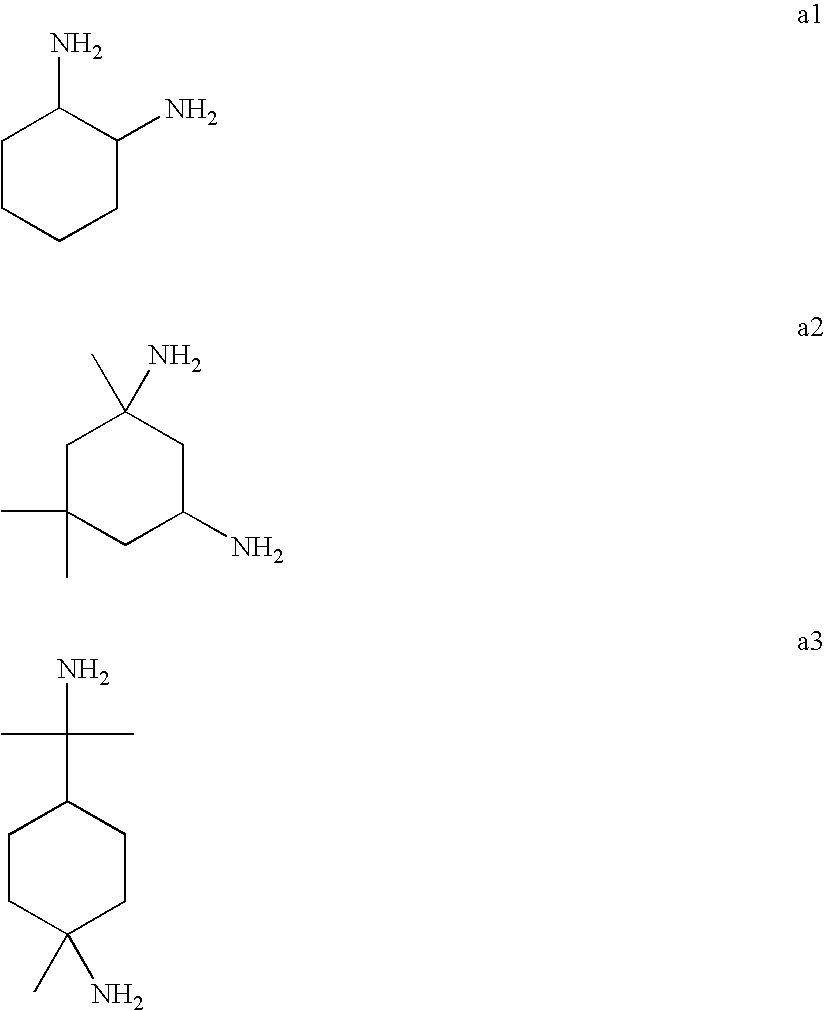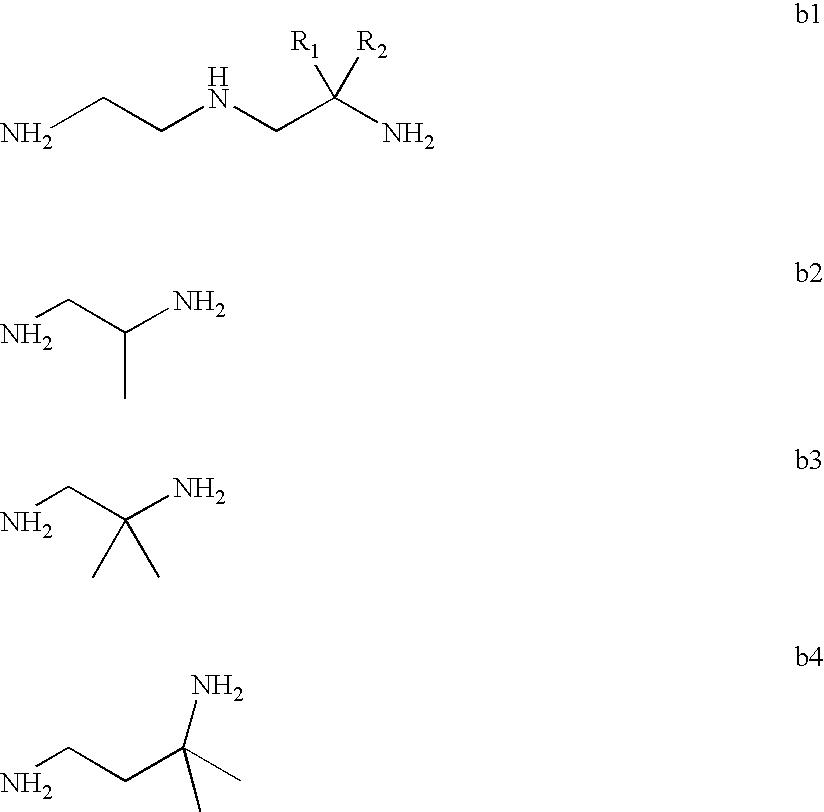Mannich detergents for hydrocarbon fuels
a technology of hydrocarbon fuels and detergents, applied in the direction of detergent compositions, fuels, organic chemistry, etc., can solve the problem that finished mannich reaction products retain substantial unreacted primary amine conten
- Summary
- Abstract
- Description
- Claims
- Application Information
AI Technical Summary
Benefits of technology
Problems solved by technology
Method used
Image
Examples
example 1
[0070]Procedure for Preparation of 1,2-Diaminocyclohexane-Cresol Mannich (“DAC-C Mannich”). The practice and advantages of this invention are demonstrated by the following examples which are presented for purposes of illustration and not limitation. In each Mannich condensation reaction the following general procedure was used. The Mannich reaction products of the present invention were prepared by reacting 1,2-diaminocyclohexane (“DAC”) as a mixture of trans and cis isomers thereof, polyisobutylene-substituted ortho-cresol (“PIB-cresol”), and formaldehyde (“FA”). The PIB-cresol was formed by alkylating ortho-cresol with a polyisobutylene having a number average molecular weight of approximately 900. The DAC, PIB-cresol, and FA were reacted in the following manner in a resin flask equipped with mechanized stirring, nitrogen feed, a Dean-Stark trap, and a heating mantle. Solvent, Aromatic-100, and the PIB-cresol, were introduced to the flask and the mixture was heated to 40° C. along...
example 2
[0084]Additional Mannich reaction products were prepared in a similar manner as described for the DAC-C Mannich in Example 1 at the following reactant mole ratios. Sample 4: 1.0:1.0:1.0 DAC:PIB-cresol:FA, and Sample 5: 1.0:2.0:2.0 DAC:PIB-cresol:FA, respectively. Performance Test. The Mannich reaction products of Samples 4 and 5 were each subjected to an M102E (CEC-05-A-93) engine cleanliness evaluation test. The untreated base fuel was also separately tested using the same standard engine test (Sample F).
[0085]The treat rates (based on solids content) and results for the M102E (CEC-05-A-93) tests are reported in Table 4 below.
[0086]
TABLE 4SampleRunTreat (PTB)IVD (mg)438.827.2538.838.5F0405.9
[0087]As can be seen in the results of Table 4, the Sample 4 and 5 Mannich reaction products representing the present invention showed superior and better detergency in the IVD test as compared to the untreated base fuel (Sample F), as shown by their significantly lower amounts of deposit format...
PUM
| Property | Measurement | Unit |
|---|---|---|
| temperature | aaaaa | aaaaa |
| polydispersity | aaaaa | aaaaa |
| polydispersity | aaaaa | aaaaa |
Abstract
Description
Claims
Application Information
 Login to View More
Login to View More - R&D
- Intellectual Property
- Life Sciences
- Materials
- Tech Scout
- Unparalleled Data Quality
- Higher Quality Content
- 60% Fewer Hallucinations
Browse by: Latest US Patents, China's latest patents, Technical Efficacy Thesaurus, Application Domain, Technology Topic, Popular Technical Reports.
© 2025 PatSnap. All rights reserved.Legal|Privacy policy|Modern Slavery Act Transparency Statement|Sitemap|About US| Contact US: help@patsnap.com



